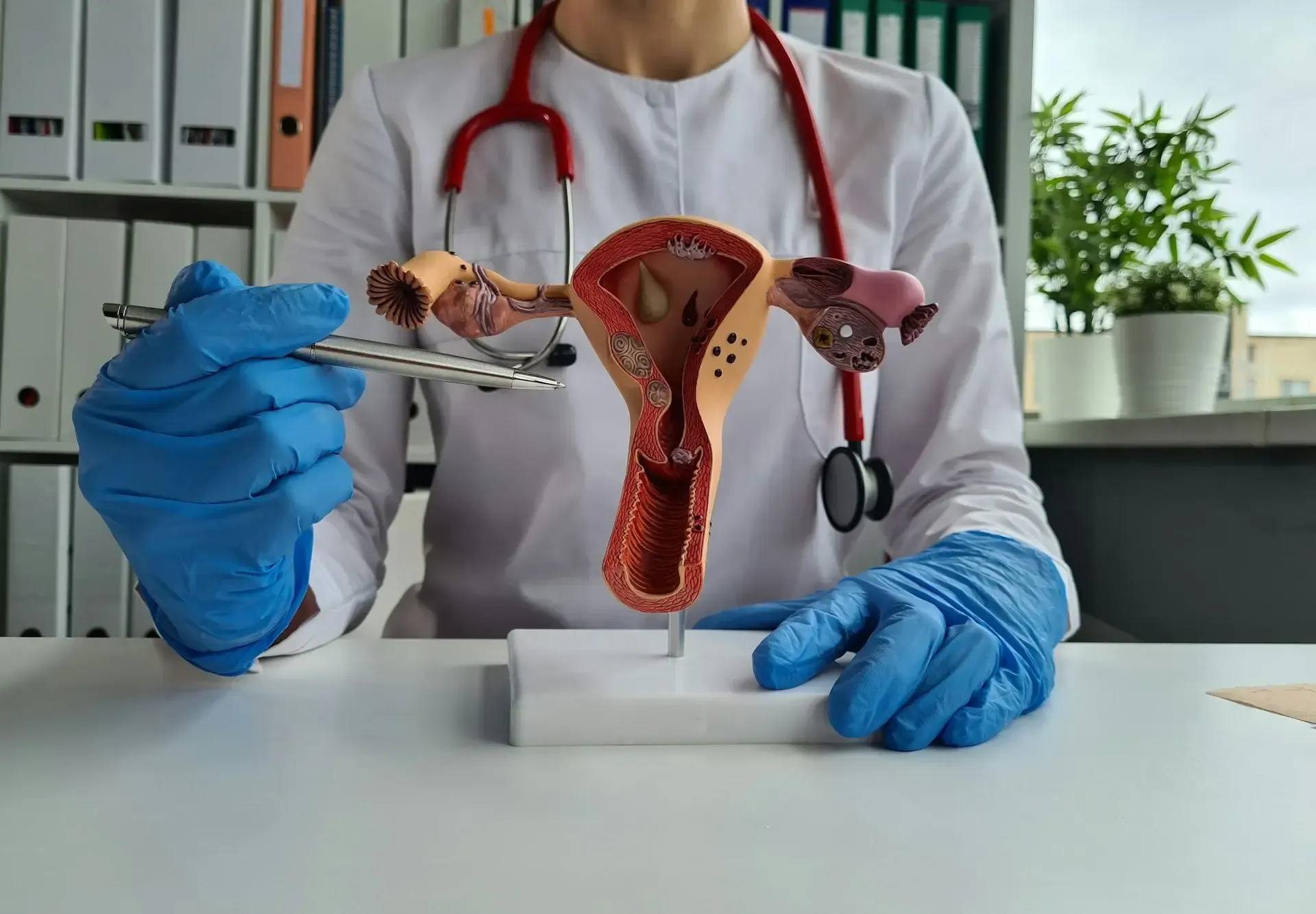Everything You Need to Know About Tubal Ligation Reversal in Mexico

If you’re thinking about expanding your family after having your tubes tied, tubal ligation reversal may be the solution you’ve been searching for. But is it possible, and is it affordable? The answer is a definite yes!
Tubal ligation reversal is giving countless women a new opportunity to conceive, and Mexico has become a top destination for this procedure. With highly skilled surgeons, modern medical facilities, and costs significantly lower than in the U.S. and other countries, it’s an option worth considering.
But where do you start? From choosing the right city to finding a reputable clinic, here’s everything you need to know to make the best decision for your journey.
Why is Mexico a great choice for tubal ligation reversal?
Deciding to reverse tubal ligation is a big deal. And finding the right place have to done it? Even bigger. Mexico has emerged as a top destination for women seeking affordable, high-quality tubal ligation reversal.
But why do so many women cross borders for this surgery? Here are some of the top reasons:
1. Lower costs
In the U.S., tubal ligation reversal can cost anywhere between $10,000 and $25,000. This steep price puts it out of reach for many women. In Mexico, however, you can undergo the procedure for as little as $3,500, with most patients paying between $7,000 and $8,500. This massive cost saving allows you to focus on your journey to motherhood without financial stress.
2. High-quality medical care
Lower costs don’t mean compromised quality. Many hospitals and clinics in Mexico are internationally accredited and staffed by highly trained surgeons. Many of them are trained in the U.S. or Europe and have extensive experience in reproductive surgeries. Advanced facilities and strict medical standards ensure that you receive top-notch care.
3. Shorter wait times
One of the biggest frustrations for women seeking tubal reversal in countries like the U.S. and Canada is long wait times—sometimes several months just for a consultation. In Mexico, you can often schedule surgery within weeks. If you’re eager to try for a baby, this faster timeline can be a major advantage.
4. All-inclusive packages
Many clinics in Mexico offer all-inclusive packages that cover:
-
Surgeon’s fees
-
Hospital stay
-
Anesthesia
-
Pre-operative tests (blood tests, ultrasounds, etc.)
-
Post-operative care and follow-ups
Some clinics even help with accommodations, transportation, and a personal coordinator for a smooth experience.
However, most packages do not include:
-
Hospital stays over 72 hours
-
Initial consultation and pre-operative tests
-
Any complications from surgery
-
Travel and lodging expenses
Before booking, always ask for a detailed cost breakdown to avoid surprises. If you need a customized package that covers everything, Quality Care Global (QCG) can help you find the right clinic and tailor a plan that fits your needs.
5. A comfortable place to recover
Recovering in Mexico can be a lot more enjoyable than staying in a hospital in the U.S. Many people choose to recover in top cities like Cancún or Tijuana, where they can rest in a peaceful environment before heading home.
How much does a tubal ligation reversal cost in Mexico?
On average, the total cost of a tubal ligation reversal in Mexico falls between $3,000 and $11,000, with most patients paying around $7,000 to $8,500. However, it varies depending on factors such as:
-
The clinic and its reputation
-
The surgeon’s experience
-
The city where the procedure takes place
-
Additional services included in the package
Here’s a rough breakdown of typical costs:
-
Surgical procedure: $3,800
-
Anesthesia: $500
-
Hospital and facility fees: $4,200
By contrast, in the United States, tubal ligation reversal can cost anywhere from $10,000 to $25,000, with cities like Los Angeles charging up to $24,700 for the procedure. That means choosing to have the surgery in Mexico can save you up to 65% or more.
Does insurance cover tubal reversal costs?
Most insurance plans do not cover tubal ligation reversal since it is considered an elective procedure. However, many Mexican clinics offer flexible financing plans or accept medical loans, making it easier to manage the cost.
Top destinations in Mexico for tubal reversal
Mexico is home to several top-tier medical hubs that provide excellent care at affordable prices. But with so many options, how do you decide where to go? Here’s a look at the best destinations to help you find the right fit:
Tijuana
If you want a quick and easy trip, Tijuana might be your best bet. Located right across the U.S. border, it’s just a short drive from San Diego, making travel simple. Many clinics even offer shuttle services from the airport or border crossing.
The tubal reversal cost in Tijuana ranges from $3,795 to $8,000. With experienced surgeons and modern medical facilities, Tijuana is a top choice for those looking for affordability without the hassle of long-distance travel.
Ciudad Juárez
For the most budget-friendly option, Ciudad Juárez is worth considering. This border city is known for low-cost, high-quality medical procedures. It’s easy to reach from Texas and other nearby regions.
Plus, many clinics cater specifically to international patients, offering English-speaking staff and all-inclusive packages to make your trip stress-free. Prices for tubal reversal in Ciudad Juárez typically range from $3,500 to $5,000.
Cancún
Want a surgery and vacation in one? Cancún gives you world-class medical care and a beautiful place to recover. Imagine healing while relaxing by the ocean, enjoying warm breezes and clear blue waters.
Plus, Cancún’s international airport makes it an easy destination to fly to, no matter where you’re coming from. The cost of tubal reversal in Cancún generally falls between $4,000 and $7,000.
Mexico City
If you’re looking for the most advanced medical care, Mexico City is the place to be. As the capital, it has some of the most advanced medical facilities in Latin America. Many doctors here have trained in the U.S. or Europe, ensuring you get high-quality care.
Expect to pay anywhere from $3,350 to $7,500 for tubal reversal in Mexico City. The only downside? It’s a busy, bustling city, so if you prefer a quieter recovery, you might want to stay in a nearby town.
Planning your trip for tubal reversal in Mexico
Getting surgery in another country requires careful planning. Here’s what you need to consider:
Step 1: Research the right surgeon and clinic
-
Look for board-certified surgeons with expertise in microsurgical tubal reversal.
-
Read patient reviews on forums, Google, Facebook groups, and clinic websites.
-
Ask about success rates, clinic accreditation, and what’s included in the package.
-
Choose clinics certified by the Joint Commission International (JCI) or Mexico’s Consejo de Salubridad General
-
Schedule a virtual consultation to ask any questions you may have and discuss your case in detail.
Step 2: Sort out travel documents and book your flight
Before you pack your bags, make sure your paperwork is in order.
-
Make sure your passport is valid.
-
Most people enter Mexico on a tourist visa (valid for up to 180 days).
-
Consider travel insurance in case of unexpected medical or travel delays.
-
Book your flight and arrange transportation to and from your destination.
Step 3: Find a comfortable place to stay
-
Look for medical recovery suites or hotels with quiet, relaxing environments.
-
Some clinics partner with nearby hotels to offer discounts for patients.
-
Consider an extended-stay hotel with a kitchenette if you’ll be in Mexico for a week or more.
Step 4: Prepare for surgery and recovery
-
Follow your surgeon’s pre-op instructions (such as avoiding smoking and alcohol).
-
Pack loose-fitting clothes and essential recovery items (like a heating pad and snacks).
-
Plan to stay in Mexico for at least 5–7 days post-surgery for follow-ups.
Need assistance in finding the right destination and planning your trip? Let us guide you at QCG!
What happens during a tubal reversal procedure in Mexico?
If you're planning to get your tubes untied in Mexico, it’s important to know what the process involves. Here’s a detailed breakdown of what happens before, during, and after surgery:
Pre-surgery evaluation and requirements
Before the procedure, your doctor will need to check if you're a good candidate for tubal reversal, including:
-
Detailed medical history review to discuss your past pregnancies, surgeries, and the type of tubal ligation you had.
-
Blood tests to make sure you're in good health for surgery.
-
An ultrasound to see the condition of your uterus and ovaries.
-
A hysterosalpingogram (HSG) X-ray to see if your fallopian tubes are blocked or damaged.
-
A general health check-up to assess conditions like diabetes or high blood pressure, which need to be controlled before surgery.
-
Assessment of ovarian reserve and partner's sperm analysis (if applicable)
Some clinics might require additional tests based on your specific health conditions or the type of tubal ligation you previously had. If your fallopian tubes are too short or heavily scarred, your doctor might suggest IVF as a better option.
Step-by-step surgical process
The surgery is performed under general anesthesia and typically takes two to three hours:
-
A small incision is made in the lower abdomen.
-
The surgeon locates the fallopian tubes and removes blocked or damaged sections.
-
The healthy sections of your tubes will be reconnected using fine sutures under a high-powered microscope.
-
A dye test will be done to confirm tubes are fully open and functioning.
-
The incision is closed, and you're shift to the room.
How long does it take to recover after tubal ligation reversal?
Full recovery may take a few weeks. In the first 24 hours, you may feel groggy, sore, or slightly nauseous. Pain medication will be provided. Most women stay in the hospital for one night, but some clinics allow same-day discharge.
-
The first week will involve mild to moderate discomfort. It’s best to avoid heavy lifting, bending, or intense physical activity.
-
After two weeks, you can resume light activities, but strenuous exercise should still be avoided.
-
After four to six weeks, full recovery is expected. You can return to normal exercise, work, and sexual activity.
Your doctor will give you instructions on pain management and follow-up care. If you notice severe pain, fever, or unusual discharge, contact your doctor immediately.
When to return home after surgery?
You don’t have to stay in Mexico for too long after the procedure, but you also shouldn’t rush back home too soon.
-
Most women can fly home within five to seven days after surgery.
-
If you’re driving or taking a long road trip, waiting at least a week is recommended to avoid unnecessary strain.
-
If any complications arise, your doctor may suggest staying a few extra days for monitoring. Just be sure to follow your doctor’s advice!
How successful is tubal ligation reversal?
The chances of getting pregnant after a tubal ligation reversal depend on several factors, including:
-
Age
-
The type of ligation originally performed
-
The condition of the fallopian tubes
Research has shown that many women can successfully conceive after the procedure. A 2019 study found that out of 93 women who had laparoscopic tubal reversal, 75% became pregnant, and 53% gave birth successfully.
One of the biggest factors influencing success after tubal reversal is age. The younger a woman is, the better her chances of conceiving. As women get older, egg quality and ovarian function naturally decline, which can make pregnancy more difficult.
The same 2019 study found the following pregnancy and birth rates based on age:
| Age Group | Pregnancy Rate | Delivery Rate |
|---|---|---|
| 27-35 years | 95.7% | 73.9% |
| 36-39 years | 77.5% | 47.5% |
| 40-42 years | 68.4% | 52.6% |
| 43-47 years | 36.4% | 27.3% |
In addition, the method used during your original sterilization affects reversal outcomes. If your tubes were blocked using clips or rings, the reversal is more successful, with pregnancy rates reaching 84%. On the other hand, if a large portion of your tubes was removed (such as with the Pomeroy method), your chances drop to about 50%.
Moreover, longer tubes post-reversal are linked to better pregnancy rates. Studies indicate that women with tubal lengths greater than 4 cm have a 50% pregnancy rate. Conditions such as endometriosis, obesity, and hormonal imbalances may also reduce the likelihood of pregnancy, even after a successful tubal reversal.
Though every woman’s situation is unique, it’s important to talk to a specialist. A doctor can help assess your chances and guide you toward the best path for growing your family.
Risks and complications
While tubal ligation reversal can be successful, there are some risks to be aware of:
-
Infection (preventable with proper wound care)
-
Scar tissue formation, which may re-block the tubes
-
Ectopic pregnancy, occurring in 10-20% of cases
-
Bleeding or anesthesia reactions (rare but possible)
Is tubal ligation reversal in Mexico right for you?
Deciding whether tubal ligation reversal in Mexico is the right choice comes down to your goals, health, and expectations. If expanding your family is your dream, this procedure can give you a second chance at natural conception. Mexico offers an affordable, high-quality option with experienced surgeons, state-of-the-art facilities, and significant savings compared to the U.S. and Canada.
The key is making the right choices—find a trusted clinic, understand the process, and plan your trip wisely. QCG makes it easy by connecting you with top-rated specialists and handling all the details. Reach out today and start your journey toward growing your family!

